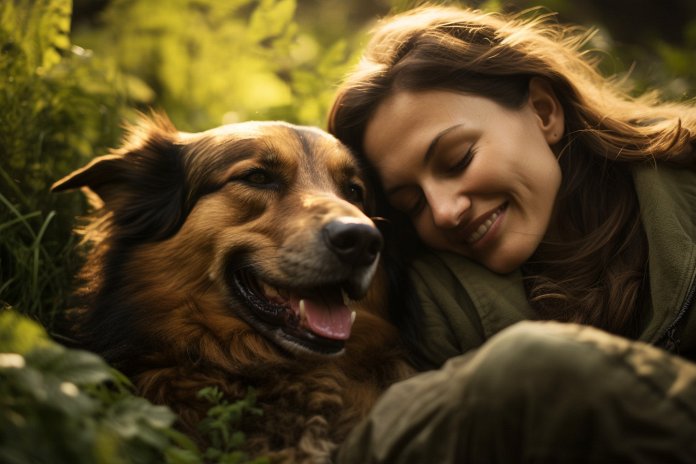
Dogs are amazing creatures that bring joy to our lives and provide companionship. However, some dogs can become overly dependent on their owners, causing them to feel anxious and clingy. In this article, we will explore the signs of a dependent dog and discuss the reasons behind their behavior.
Signs Your Dog is Feeling Overly Dependent:
If your dog follows you everywhere, sleeps with you, and becomes anxious when you leave, they may be exhibiting signs of dependency. They might engage in destructive behaviors or become overly excited when you return home. While it may seem cute at first, it’s important to address this issue to ensure your dog’s well-being.
Body Language:
There are several signs that indicate a dog is feeling too dependent, such as barking, jumping up, howling, wagging their tail excessively, head bobbing, dilated pupils, and play bowing. Other signs include peeing on the floor, destructive behavior, being anti-social with other dogs, and nipping at people who get too close to their owner.
History of How Dogs Became Dependent on Humans:
The relationship between dogs and humans has evolved over time, with dogs becoming dependent on their owners for food and protection. Unlike their wild wolf ancestors, modern dogs do not have to hunt for their meals or face threats from predators. This shift in behavior has made dogs more reliant on their owners.
Scientists Prove Dogs Feel Dependency:
Scientific studies have shown that dogs exhibit dependent behavior, while wolves exhibit more independence within their pack. It is believed that humans have bred dogs to be subservient and reliant on their owners.
Training Tips For Clingy Dogs:
If your dog experiences separation anxiety, there are steps you can take to help them become less dependent. Start by recognizing the triggers that cause anxiety, such as grabbing your car keys or putting on your coat. Gradually desensitize your dog to these triggers by exposing them to the stimuli without actually leaving the house. You can also provide your dog with toys and activities to keep them occupied while you’re away. Additionally, establishing a routine and giving your dog their own space can help them feel more secure and independent.
Conclusion:
While it’s natural for dogs to form strong bonds with their owners, it’s important to ensure they don’t become overly dependent. By understanding the signs of dependency and implementing proper training techniques, you can help your dog become more independent and less anxious when you’re not around.
“Finding the balance between love and dependency – understanding our dogs’ need for space”

Tips & Things to Know
1️⃣ Recognize the signs of an overly dependent dog: Some signs include following you around constantly, engaging in destructive behaviors when left alone, and becoming overly excited when you return home.
2️⃣ Understand the reasons behind your dog’s dependency: Dogs may become dependent on their owners due to separation anxiety, lack of socialization with other dogs, or the pack mentality that stems from their wolf ancestors.
3️⃣ Use training techniques to help your clingy dog: Gradually acclimate your dog to being alone by starting with short periods of time and gradually increasing them. Provide mental stimulation and toys for your dog to keep them occupied when you’re away. Establish a routine and set boundaries to give both you and your dog some space.
Frequently Asked Questions, Answered ✅
1. Can dogs feel dependency and become overly attached to their owners?
– Yes, dogs can feel dependency and become overly attached to their owners, leading to separation anxiety and clingy behavior.
2. What are some signs that a dog is feeling overly dependent?
– Signs that a dog is feeling overly dependent include following their owner everywhere, whining, pacing, destructive behavior when left alone, and being anti-social with other dogs.
3. How did dogs become dependent on humans?
– Dogs became dependent on humans through domestication, which eliminated many of their primal instincts and turned them into reliant companions.
4. Do dogs exhibit body language that shows their dependency on their owners?
– Yes, dogs exhibit body language such as barking, jumping up, howling, wagging their tail, head bobbing, and play bowing to show their dependency on their owners.
5. Are there training tips for dealing with clingy dogs?
– Yes, training tips for dealing with clingy dogs include gradually desensitizing them to separation through repetition, providing them with plenty of mental stimulation and toys while they are alone, and establishing a routine and boundaries for bedtime.